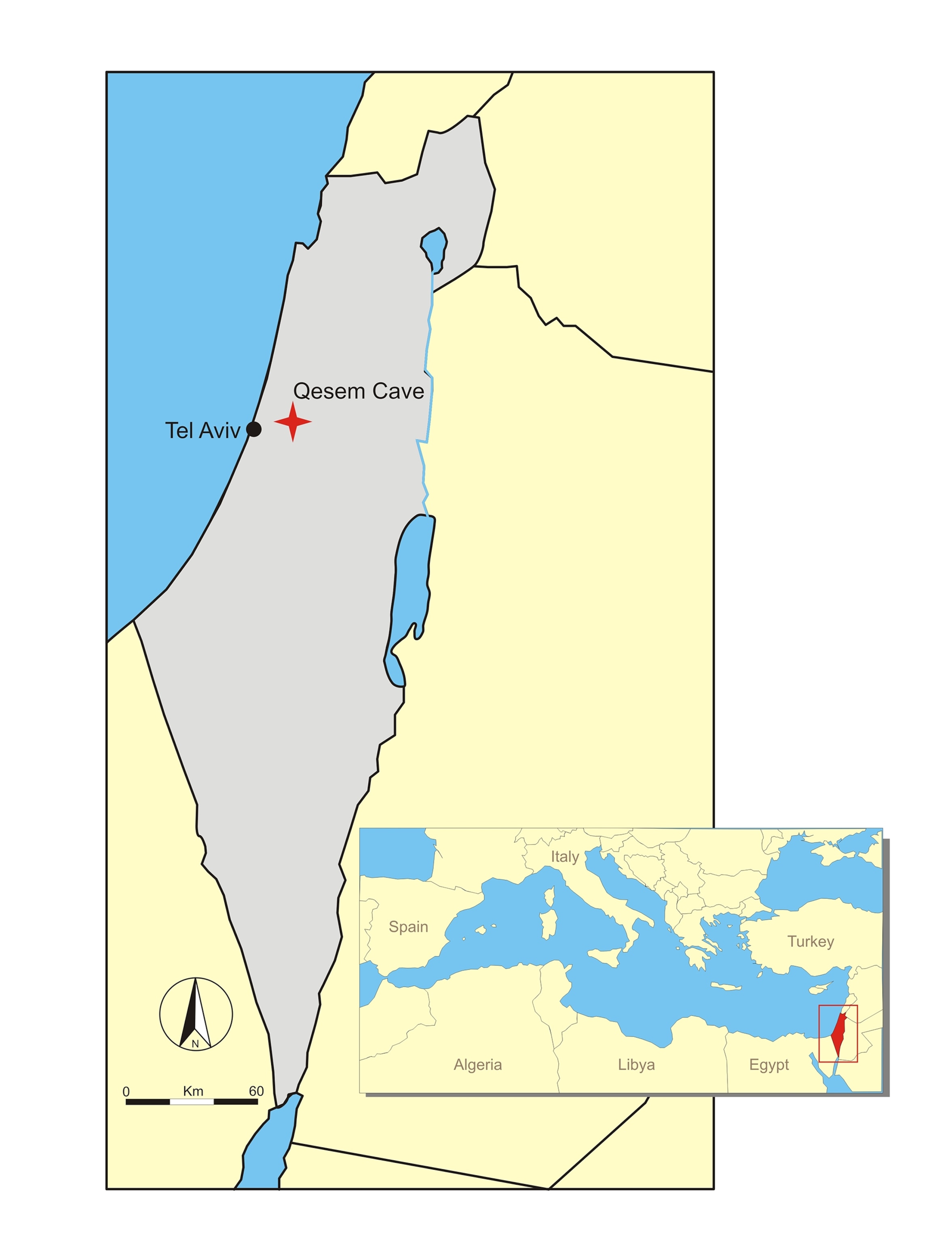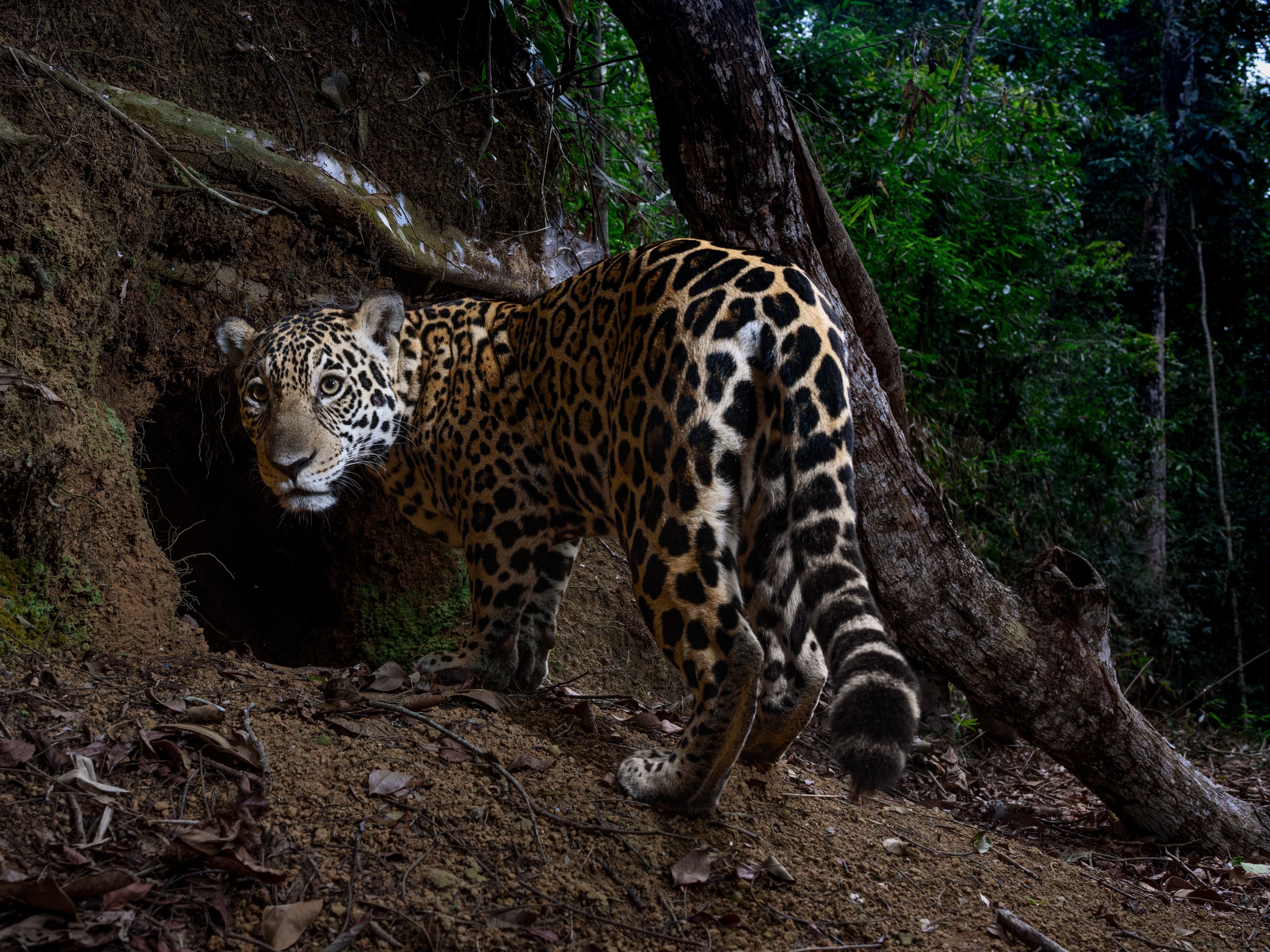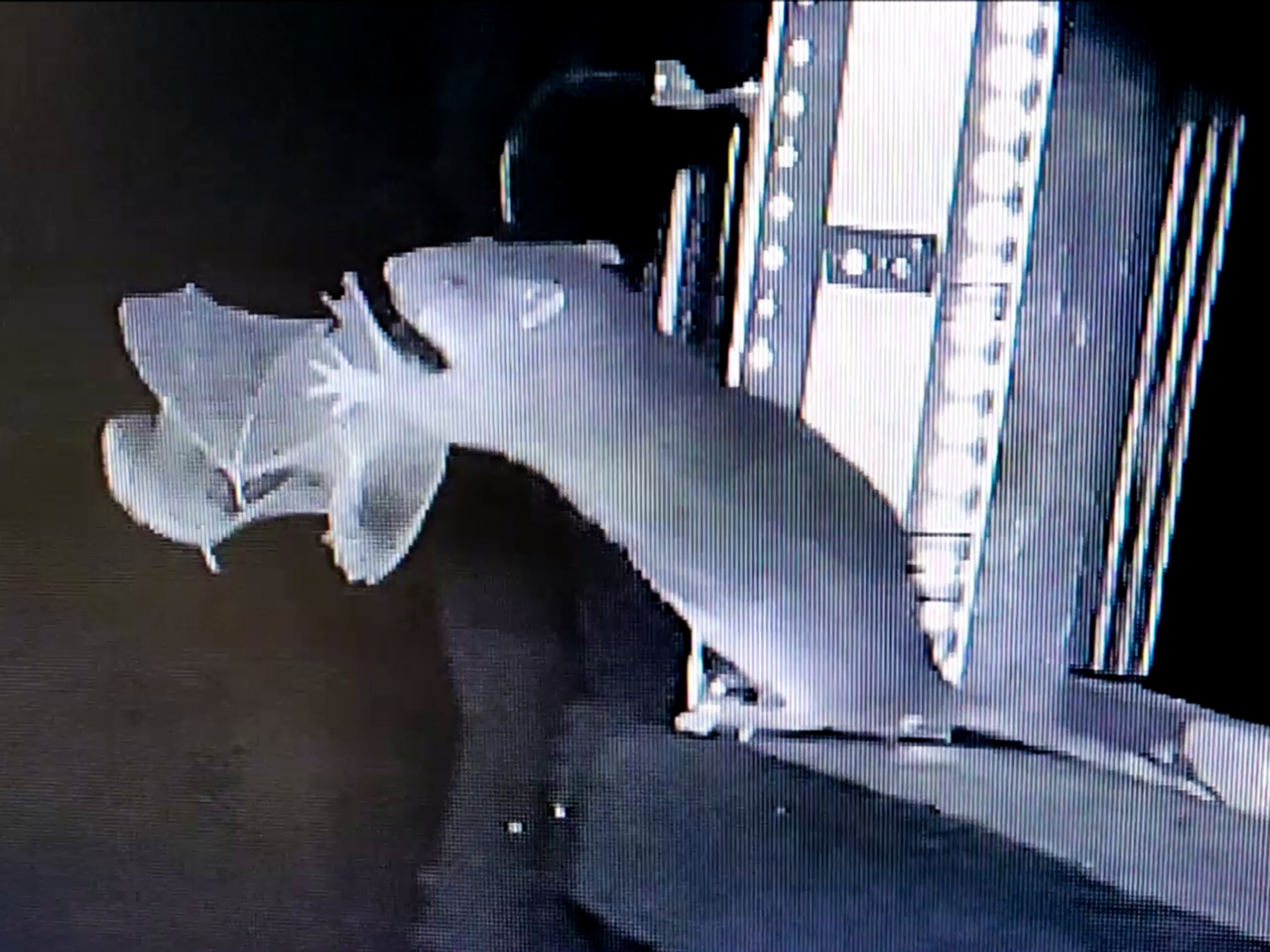
Oldest Known Hearth Found in Israel Cave
New species of early human cooked there 300,000 years ago, say archaeologists.
An ancient limestone cave in the rolling countryside east of Tel Aviv has provided a captivating glimpse into humanity's remote past—the oldest known hearth, around which families periodically cooked their meals more than 300,000 years ago.
It's "the first-ever fireplace," said Tel Aviv University archaeologist Ran Barkai in an email, and the earliest-known evidence of domestication of fire. Bringing home and roasting meat are "two very human phenomena that for us seem natural, but really are not. [The hearth] belongs to a crucial time in human biological and cultural evolution."
The hearth lies inside Qesem Cave, which is located in a geographical area known as the Levant—southern Turkey, Syria, Jordan, Lebanon, and Israel.

The identity of the hearth users is a mystery, though. "We call it for now a new hominin lineage," Barkai says.
"It is clearly different than [Homo] erectus and has affinities of both [Homo] sapiens and Neanderthals," he explains. "Since Neanderthals appear very late in the Levant and are of European origin, and since the Qesem [hominin] teeth bear more resemblance to early Homo sapiens in the Levant, we believe they are closer to Homo sapiens."
Qesem Cave was originally uncovered in October 2000 by a construction crew building a road. But it has taken years of excavation and analysis for Barkai, one of the co-leaders of the project, and his colleagues to build what they say is an unequivocal case for how the site was used.
Scientists found a thick bed of ash in the center of the cave. Using infrared spectroscopy, they were able to determine that the tiny bits of bone fragment mingled among the ash had been heated to high temperatures. That suggests this fire pit was used for cooking.
The ashes were not the product of a single blazing bonfire one night at a long-ago barbecue, though. Microscopic analysis of a cross section of the ash bed revealed a vast number of microstrata—layer upon layer of ancient ash, the residue of many, many fires built there over a long period of time.
Charred remnants of animal bones and flint tools used in butchering meat offered additional evidence for the activities that took place there.
Cave Hotel
The discovery of different styles and shapes of tools in other parts of the cave points to the space being organized into rooms for various functions.
"These were a very sophisticated, very clever people whose toolmaking was advanced, who hunted skilfully, could produce fire at will, and of course ate well," says Barkai.
The hearth must have formed the heart of domestic life for countless generations of hunter-gatherer families who roamed the region during the Pleistocene epoch. They would have stopped periodically at the cave, staying anywhere from a few days to a few weeks at a time.
"We believe it would have been a fairly small group of people staying here," says Barkai. "Perhaps a couple of extended families, maybe 15 or 20 people in all, staying for fairly short periods of time but always coming back."
And why wouldn't they? This would have been a very desirable place to be, says Barkai. Not only did the cave provide spacious shelter, but it also was close to fresh water, had good stone outcrops nearby for toolmaking, and was in an area with plenty of game—mainly fallow deer, judging from the charred bones in the cave.
There was also abundant wood for cooking. The cave was situated in an ideal spot, a classic Mediterranean landscape of the time that was lightly forested and well watered.
Hearth and Home
For 200,000 years—an almost inconceivable amount of time to the human imagination—the cave served as a sort of Paleolithic base camp, one whose legacy of home cooking and domesticity would offer archaeologists of a much later age a fascinating window into the dawn of humanity's use of fire.
"They were at the start of a new stage of human existence, when people began hunting deer, gathering firewood, and making barbecues," Barkai explains.
"Finding this makes me feel at home with the human race, makes me smell the smoke and the roasting meat and feel a part of a very long, and very tasty, human endeavor."





